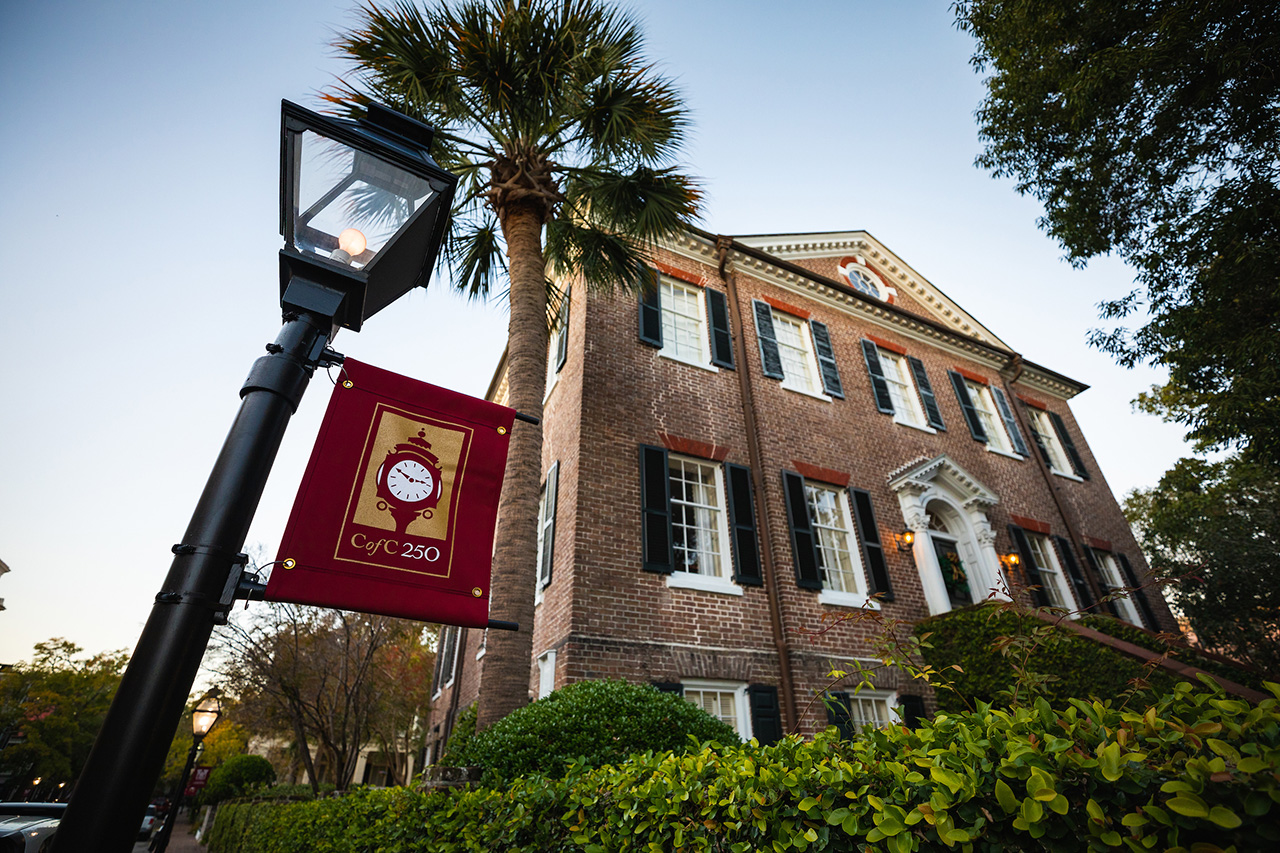Campus Preservation Fund aims to preserve College of Charleston’s historic legacy
November 9, 2020
The President’s House at Dusk
The College of Charleston has long been renowned for its beautiful, historic campus featuring classically designed homes and narrow brick walkways nestled beneath oak trees dripping with Spanish moss.
The main campus encompasses 90 historic homes and buildings that were constructed between 1770 and 1940, including the iconic National Historic Landmark, Randolph Hall. These buildings are not only beautiful, they also serve as markers of historic events including the establishment of the College by men who included signers of the Declaration of Independence and the Constitution. Research tells us that these buildings, some of which were built by enslaved Africans, have survived both British invasion during the American Revolution and more than 500 days of shelling by Union forces during the Civil War. Less obvious to the public eye is the ceaseless effort required to preserve and protect these historic structures.
“These brick and stone buildings are the soul of the city,” says Harlan Greene, scholar-in-residence with the College’s Special Collections. “They survive and keep our story, with all its good and bad, alive. We have a moral responsibility to protect these buildings into perpetuity.”
That is why the Campus Preservation Fund is one of the College’s nine fundraising priorities for the Drive for the 250th, which launched during the institution’s 250th anniversary-year celebration. The goal is to raise $1.3 million to preserve and maintain the historic structures. Vice president of Facilities Management John Morris explains that the College has been modernizing the buildings for decades, handling issues like electricity, plumbing and air quality in a fiscally responsible manner, while also adhering to the City of Charleston’s historic preservation doctrines.
These buildings are a “living lab” for students enrolled in the College’s Historic Preservation and Community Planning (HPCP) undergraduate program. James Ward, landscape architect and senior instructor, says they offer students a tremendously important learning tool.
“HPCP seeks to develop leaders in the stewardship of the built environment,” explains Ward. “We combine traditional lecture courses with a hands-on approach to the buildings and an active engagement with the larger community. We are especially passionate about our home here at the College — a potentially exemplary resource.”
The HPCP program is teaming up with Facilities Management to assist in various management, assessment, research and interpretive components of the historic properties on campus.
Structural maintenance is just part of the preservation process, which also includes researching and writing stories about the people who lived there. The College’s 250th Anniversary Historical Documentation Committee has undertaken that task and is working to record these stories and share them with the public through the website Discovering Our Past.
For example, the research conducted on 14 Green Way (formerly known as the “Lesesne House”) revealed that the house was built in 1872 for A.O. Jones, an African American man who was a clerk of the South Carolina House of Representatives during Reconstruction. A student discovered Jones’ initials on the front door, verifying the hypothesis. If the door had not been saved, that piece of history would have been lost.
The historic campus also draws students to the College and remains with them long after they cross the Cistern at graduation. So much so, that they want to ensure that campus buildings are preserved for future generations.
“One of the first things I remember about CofC when I toured the campus was how beautiful it was and how so much of the beauty was due to the amazing historic preservation that had gone on throughout the years,” says Ryan Elizabeth Smiley ’14. “In my opinion, one of the great aspects of attending CofC is the amazing connection to the past you have and how you are walking the same halls as others did before this nation was even officially founded!”













